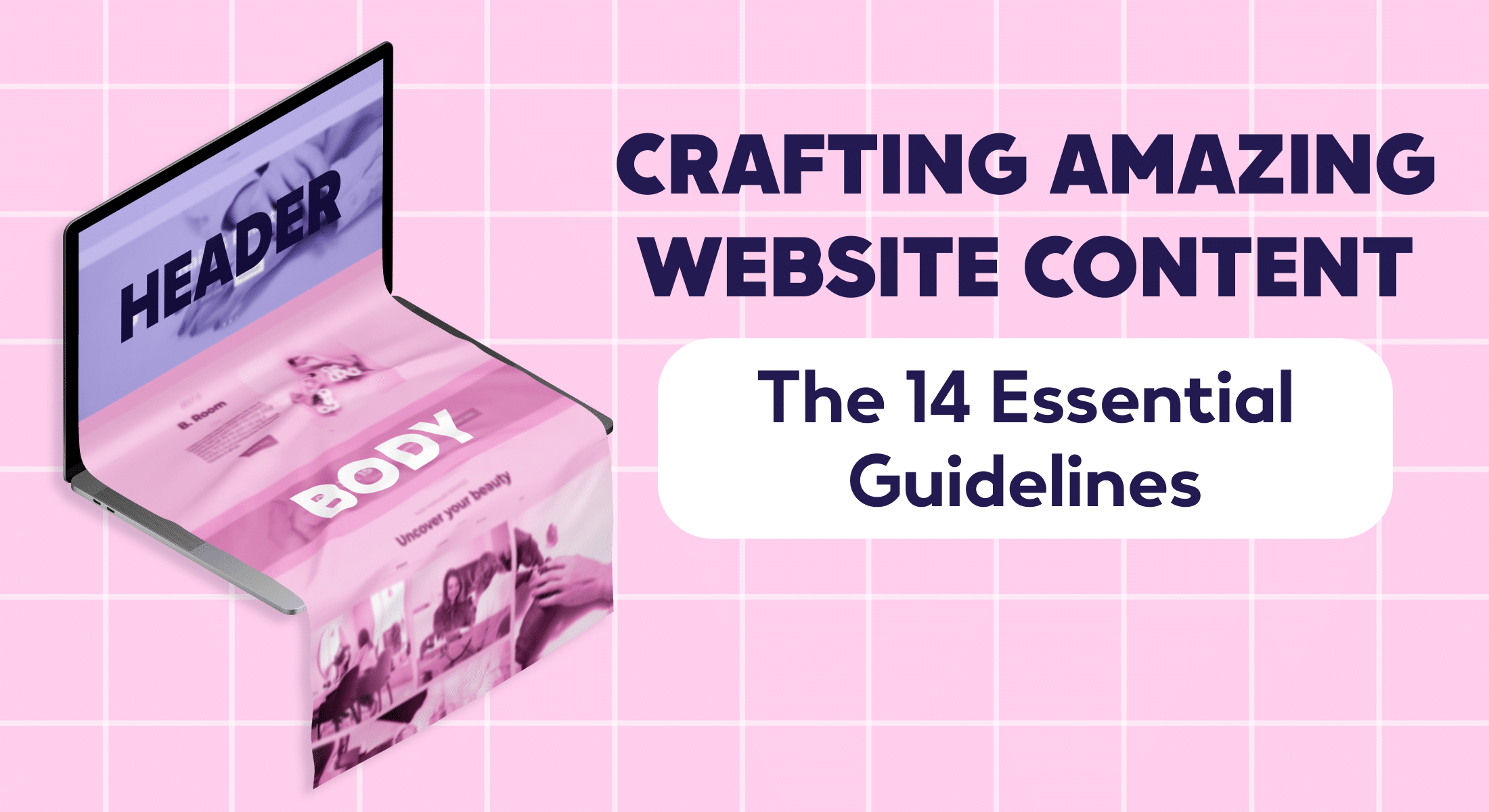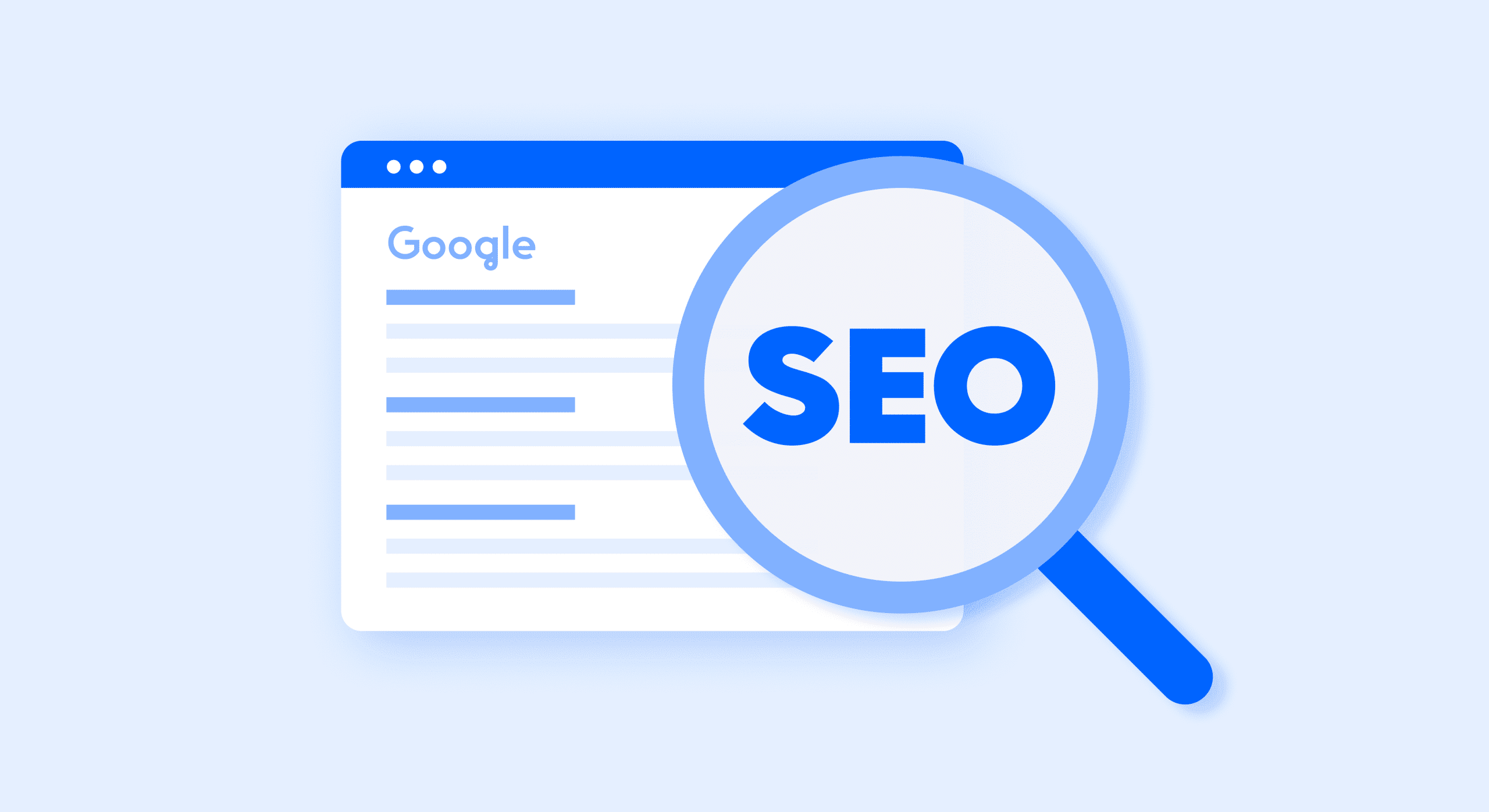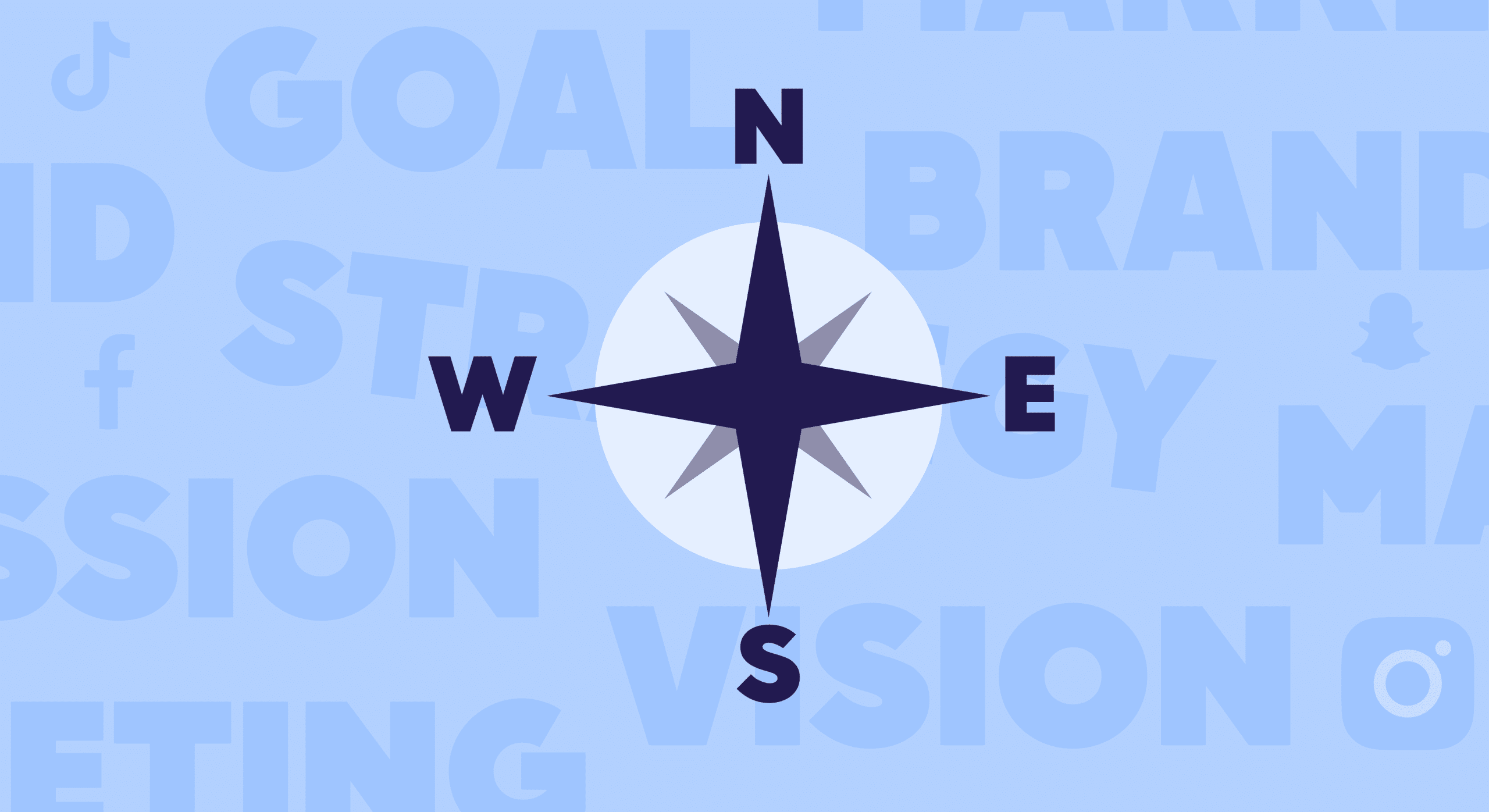
How to Choose the Right Social Media for Your Business
16 min to read
Set Sail on the Seas of Social Media Marketing
So, you’re ready to dive into the vast ocean of social media to help your business grow, but you’re feeling like a fish out of water. With an almost endless sea of platforms to choose from for your digital marketing strategy, it’s enough to make anyone’s head swim!

That’s why we’re here to throw you a serious digital marketing lifebuoy and help you keep your head above water in a world of confusing and sometimes contradictory advice about different social media promotions channels. In this article, we’ll help you reel in the perfect social media platforms for your business, hook, line, and sinker!
We will explore how to match your business goals, marketing efforts, customer interest, and target audience while evaluating platform features and crafting a social media strategy to keep you swimming with the tide.
So, let’s dive in and make a splash on social media!
Charting Your Business Goals
As you prepare to set sail on your social media journey, it’s vital to pinpoint your business goals. Imagine your goals as a compass guiding you through the digital marketing world’s turbulent waves and unpredictable currents.
Understanding what you aim to achieve with your social media efforts will make it easier to get there, and help make sure that every post, like, and comment is a step in the right direction.
Let’s drop anchor and discuss the three common goals that businesses often have in mind when venturing into the social media seas:

Raising Your Flag: Brand Awareness
If your goal is to raise your brand’s flag high and make it visible across the crowded internet, you’ll need to select a platform that can reach a broad audience and that lets you easily share content.
You want a platform where your brand’s flag can flutter freely, catching the eye of potential customers as they sail through their feeds.
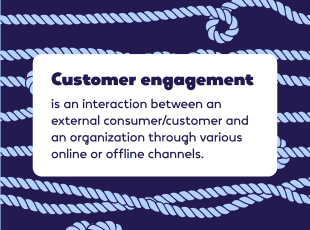
Building Your Crew: Customer Engagement
Crew loyalty is essential for any seafaring captain, and in the business world, it’s no different; building relationships with your customer base is the key to long-term success.
The social media seas can be a bustling marketplace of ideas and conversations, so marketing campaigns and platforms that promote interaction and dialogue between users are your best bet for fostering your customer’s interest and engagement inbound marketing.

Treasure Hunting: Lead Generation
If your number 1 goal is to hunt for treasure like leads, you’ll need to scout platforms that offer advanced tools to help you target potential customers.
Social media platforms with awesome advertising options can act as your trusty treasure maps, leading you to golden opportunities for lead generation and sales promotions.
By anchoring your voyage in well-defined business goals, you’re making sure that no matter how rough the social media seas may be, you’ll always have a clear course toward your destination.
So, with your compass set and your flag ready to fly, let’s sail forth into the wide world of social media platforms!

Mapping Out Your Target Audience
As any seasoned sailor (or CEO) will tell you, a successful voyage isn’t just about knowing your destination; it’s also about understanding the terrain.
In the social media seascape, your target audience represents the waters you’ll be navigating. Just like the ocean’s currents and depths can vary, so can the characteristics and online behaviours of your audience.
To make your journey as smooth as possible, you need to chart the course of your audience’s habits and preferences. Let’s get our bearings:
Demographic Currents: Age, Gender, and More
The demographic profile of your audience is like the strong currents guiding your vessel. This includes factors like age, gender, location, and income level.
Different platforms cater to different demographics, so choose a platform where the currents align with your target audience’s characteristics.
Psychographic Winds: Interests, Values, and Lifestyles
The psychographic profile of your audience represents the winds that can either propel your ship forward or blow it off course.
These are your audience’s interests, values, and lifestyles. Understanding these can help you select a platform and marketing mix that speaks directly to them, filling your sails with the gusts of engagement and brand loyalty.

Online Behavior Depths: Content Preferences
Finally, consider the depths of the sea as the online behavior of your target audience. Do they prefer to dive deep into long-form articles, skim the surface with quick visual content, or engage in the ebbs and flows of online discussions?
Understanding prospective customers and their online behavior will help you choose a platform that supports the type of content they’re most likely to consume.
By charting your course with a keen understanding of your target audience, you’ll be able to navigate the social media seas more effectively, ensuring your content reaches the right shores and engages the right crew.
So, with your map in hand and your audience in sight, let’s set sail!
Navigating the Social Media Platform Seas
Welcome to the seven seas of social media, where each platform is a unique sea teeming with its own currents, inhabitants, and climates. Now it’s time to chart the depths and surfaces of each one.
Just as an experienced sailor recognizes the unique characteristics and challenges of each sea on their voyage, you need to gauge the advantages and pitfalls of each platform.
Now it’s time to navigate through different social media channels and platforms. Here’s a quick overview of some popular options:

1. Facebook
Considered by many as the mainland of the social media landscape, Facebook stretches out with its huge user base and diverse demographics.
It’s a great marketing mix, full of activity, chatter, and endless opportunities for the savvy entrepreneur.
It’s the ideal spot for businesses looking for a wide reach and a chance to engage with a varied audience. Plus, its advanced advertising tools make it a powerful ally in your quest to conquer the social media seas.
- Pros:
- It’s got ‘big reach’ potential, with over 2.8 billion monthly active users.
- Diverse demographics make it super versatile for businesses to use.
- Advanced advertising tools can mean powerful targeted campaigns.
- Cons:
- High competition can make it a challenge to stand out among the crowd.
- Organic reach can be hit or miss due to constant platform algorithm changes.
2. Instagram

Like all the pristine beaches and exotic islands people post about, Instagram is a paradise for visual content. Its feeds are crystal clear, brimming with stunning images and engaging short videos.
Popular among the younger travellers on the social media seas, this platform is a fantastic choice for businesses looking to boost their customer’s engagement and brand awareness with relationship marketing campaigns and visually captivating content.
- Pros:
- Highly visual platform, perfect for aesthetically appealing products or services.
- Super high engagement rates, especially among younger demographics.
- Access to Facebook’s advanced advertising tools due to shared ownership.
- Cons:
- Limited to visual content, restricting the types of information that can be shared.
- Leans heavily toward a younger demographic, which may not align with all businesses’ target audiences.

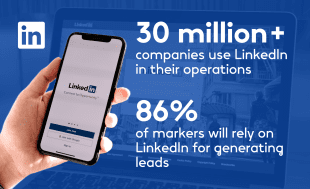
3. LinkedIn
Consider LinkedIn as the professional peninsula in our archipelago. It’s where suit-clad people, ambitious startups, and established corporations meet to network, share insights, and ‘do’ business. Oh, and for the hilarious stories.
This platform is perfect for B2B (business-to-business) marketing campaigns, thought leadership, public relations, market research, and recruitment. If your business offerings are tailored for professionals or industry decision-makers, docking at this peninsula would be a wise move.
- Pros:
- Professional networking platform, ideal for B2B marketing and recruitment efforts.
- High-quality content and discussions create a fertile ground for thought leadership.
- Advanced targeting options allow for precise marketing strategies.
- Cons:
- Less suited for B2C (business to consumer) marketing strategies due to the professional nature of the platform.
- The pace of interaction is slower compared to more casual social media platforms.

4. X (formerly Twitter)
Sigh. X is the lively, bustling island marketplace of the social media seas. Rapid and dynamic, it’s a platform where news breaks and trends emerge. It is also going through a bit of an identity crisis right now…
Still, it’s an excellent platform for sharing real-time updates, joining the latest conversations, and creating relationship marketing, all by building a reactive, responsive brand presence.
- Pros:
- Real-time interaction makes it a great platform for sharing news and updates.
- Trending topics and hashtag usage can increase content marketing visibility.
- The platform allows for direct and quick engagement with the audience.
- Cons:
- The fast-paced nature means tweets can get buried quickly.
- The character limit on tweets can constrain the complexity of the message.
- The platform is having a bit of an identity crisis.

5. TikTok
TikTok, much like a vibrant coral reef, is teeming with life and activity. Its colorful, lively, and often surprising content has quickly made it a favorite among younger audiences.
If your content marketing strategy audience is Gen Z or younger Millennials, and you can create engaging, shareable short-form video content, you might want to dive into these exciting internet marketing waters.
- Pros:
- Highly popular with younger audiences, making it a go-to platform for reaching Gen Z and younger Millennials.
- Emphasizes fun, creative, and viral content, perfect for brands with a playful or innovative image.
- High engagement rates can lead to significant brand exposure.
- Cons:
- Demographics lean heavily towards younger users, which may not be ideal for all businesses.
- Requires a high volume of content creation due to the short format and fast pace of the platform.
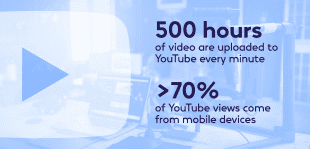
6. YouTube
YouTube, like a tranquil lagoon, offers a rest from the fast-paced bustle of other platforms. With its calm waters and in-depth content, it’s a haven for users who prefer to consume longer, more detailed videos.
If your audience enjoys watching videos and your business can produce high-quality, informative, or entertaining content, this might be your ideal harbor.
- Pros:
- Second-largest search engine after Google, making it a crucial platform for SEO.
- Long-form video content can provide comprehensive information or entertainment to users.
- Popular channels can monetize through ads, providing an additional revenue stream.
- Cons:
- Requires high-quality video production, which may be resource-intensive.
- The time and effort needed to create engaging videos can be significant.
7. Snapchat
Snapchat, like a hidden cove, offers a place for playful content. It’s an intimate, casual space where users, especially younger ones, connect with friends and follow brands that offer them engaging, behind-the-scenes content.
If your business and marketing aims are to engage a younger demographic in a more informal and direct way, setting a course for Snapchat might be the right move.

- Pros:
- Highly popular among younger audiences, offering businesses a way to engage with this demographic directly.
- Unique features, such as lenses and filters, provide creative ways to showcase your brand.
- Short-lived content can create a sense of urgency and encourage immediate engagement.
- Cons:
- Short term nature of the content means it disappears after a short time, limiting long-term visibility.
- Primarily younger user base, which may not align with all businesses’ target audiences.
8. Threads

Threads is a newly discovered island, covered in mysterious jungle. As the latest social media app on the scene, it’s still too early to know exactly what it will become.
Built by the Instagram team, it’s designed for creating updates and joining public conversations. Posts can be up to 500 characters long, and can include links, photos, and videos up to 5 minutes in length.
- Pros:
- Threads are a great way to share behind-the-scenes content and give customers a glimpse into your business.
- They’re also a great way to answer customer questions and provide support.
- It’s still so new that there is a lot of hype around it with plenty of people checking out its potential.
- Cons:
- Threads are still a new platform, so it’s not as widely used as other social media platforms.
- It can be difficult to get your threads seen by a large audience, or to know what content will work.
- While it’s had huge initial interest and sign-ups, it’s still too early to know if it will be successful.
Accessing Platform Features
As we continue to navigate the vast seas of social media and digital marketing, it’s vital to understand the unique characteristics and tools of each platform. These are like the varying winds and currents that can either help propel your ship forward or lead you off course.
Just as a seasoned captain knows how to use the wind to their advantage, a savvy business owner, CEO or social media navigator knows how to leverage platform features to meet their business objectives.
Consider the different features offered by each platform: post types, advertising options, audience interaction mechanisms, and analytics tools. Understanding these elements is akin to understanding the sea’s behavior – it can significantly impact your voyage’s success.

For instance, if your business or brand personality is visually driven, you might find Instagram’s photo and video-focused features more beneficial. Or, if your strategy involves a lot of real-time interactions, you might steer towards Twitter’s X’s real-time posting and trending features. Maybe your business suits a marketing mix of multiple social media platforms.
In essence, each social media sea offers a distinct experience, and understanding these differences will help you navigate more effectively.
Creating a Social Media Strategy
Once you’ve chosen the right social media channel platforms for your business, it’s time to develop a social media strategy. We’ve gone into this before, but long story short, consider the following steps:
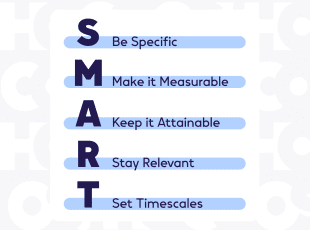
- Set S.M.A.R.T goals for your social media efforts.
- Create a content calendar to plan your posts and ensure consistency.
- Engage with your audience by responding to comments and messages.
- Monitor your progress using platform analytics and adjust your strategy as needed.
- Stay up-to-date with platform changes and trends to stay ahead of the curve.
Conclusion
Choosing the right social media platform for your business can feel overwhelming, but with a clear understanding of your goals, target audience, and platform features, you’ll be well on your way to social media success.
Remember to keep your strategy flexible and adapt as you learn more about each social media channel and what works best for your small business.
Anchoring in a Safe Harbor: The Importance of a Website in Your Social Media Strategy
Charting through the seven seas of social media has taught us that while these platforms are excellent vessels for outreach and engagement, they are not the final destination. Think of your website as a home port, providing a base for your online presence while your social media channels are the vessels that ferry your audience there.
Despite the power of social media marketing, your website remains crucial. It offers credibility, complete control over your brand voice and narrative, and a platform for in-depth information about your business. It’s the lighthouse guiding your audience home after their social media journey.

But building a website might seem as daunting as navigating uncharted waters. That’s where Hocoos AI sails to your rescue. It’s like a master builder, harnessing AI to help you craft an engaging, high-performing website that anchors your social media strategy.
So remember, a successful social media strategy isn’t complete without a secure harbor like an expertly designed Hocoos website. Now, set sail for success in the vast ocean of digital marketing strategy!
FAQs
How often should I post on social media?
There is no one-size-fits-all answer, as posting frequency depends on your audience, platform, and content. Start by posting consistently, and then use analytics to adjust the frequency based on audience engagement and preferences.
Should I use social media management tools?
Social media management tools can help you schedule posts, manage multiple accounts, and monitor engagement. Consider using one if you find it challenging to maintain a consistent presence across platforms.
How can I measure the success of my social media efforts?
Look at metrics like engagement, reach, and conversions to determine the success of your efforts. Each platform offers analytics to help you track these metrics and understand how your content is performing.
Should I invest in paid social media advertising?
Paid advertising can help you reach a larger audience, generate leads, and drive sales. Consider your goals, budget, and the platform’s advertising options when deciding whether to invest in paid ads.
Can I manage my social media presence myself, or should I hire a professional?
The decision to manage social media in-house or hire a professional depends on your expertise, time, and budget. If you have the resources, hiring a professional can help you create and maintain a strong presence that drives results.
FOLLOW us






